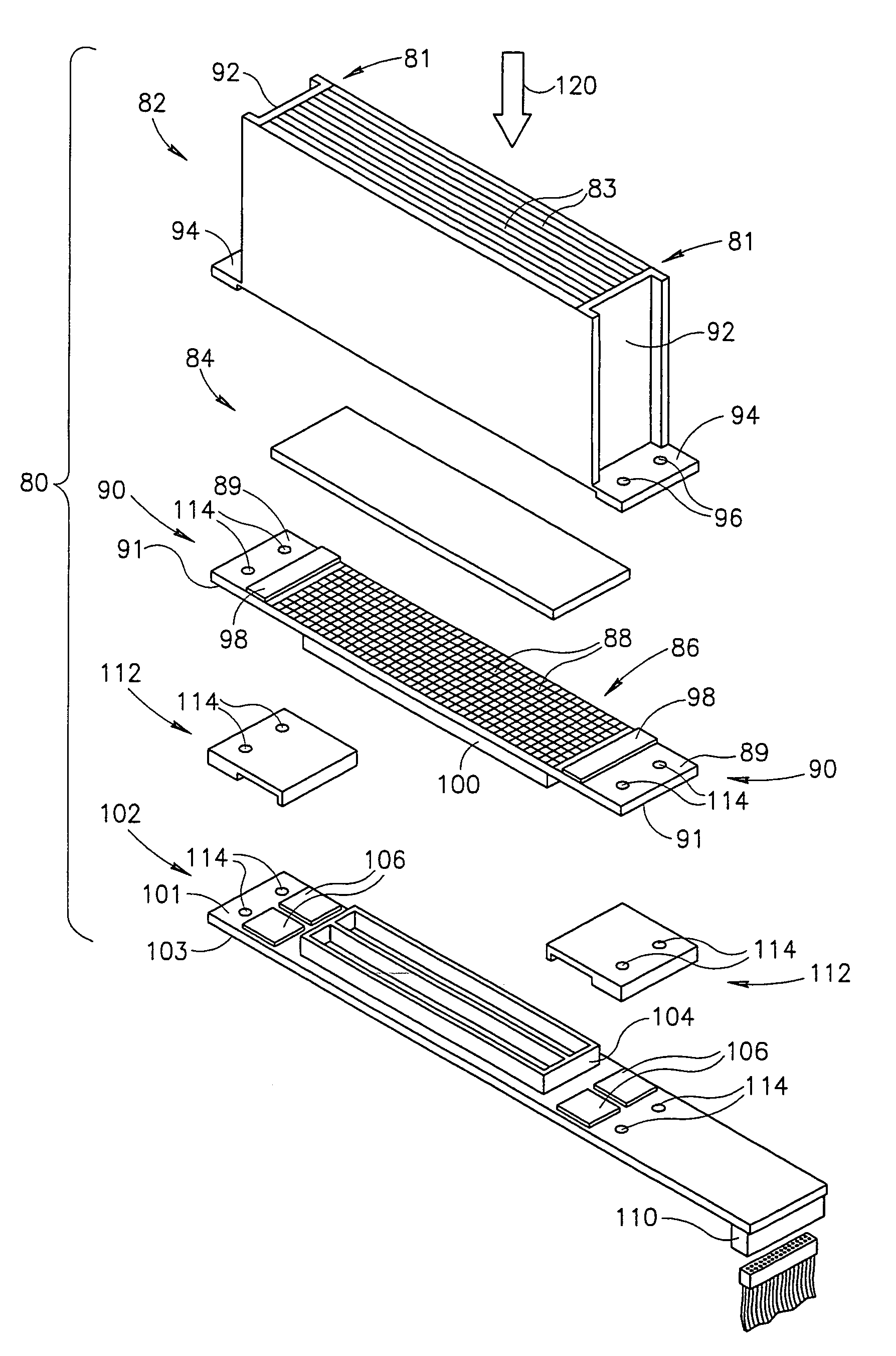CT detector-module having radiation shielding for the processing circuitry
a technology of processing circuitry and detector modules, which is applied in the field of computerized tomography (ct) xray imaging, can solve the problems of ct detector modules that are crowded, become non-functional, and are in the immediate neighborhood of each of the ct-modules in the ct-scanner
- Summary
- Abstract
- Description
- Claims
- Application Information
AI Technical Summary
Benefits of technology
Problems solved by technology
Method used
Image
Examples
Embodiment Construction
[0046]FIG. 1 schematically shows a third generation CT-scanner 20, in accordance with prior art. Only those features and components of CT-scanner 20 germane to the present discussion are shown in FIG. 1.
[0047]CT-scanner 20 comprises an X-ray source 22 controllable to provide an X-ray fan-beam 24, schematically indicated by dashed lines 26, and an array 28 of CT detector-modules 30 located opposite the X-ray source. Each CT detector-module 30 comprises a plurality of X-ray detectors (schematically shown in FIG. 2A but not shown in FIG. 1) for sensing intensity of X-rays in fan beam 24. Signals generated by the X-ray detectors in a detector module 30 responsive to X-rays incident on the detectors are transmitted via a cable 32 to a processing unit 34 that comprises electronic components (not shown) for processing the signals.
[0048]X-ray source 22 and CT detector-modules 30 are mounted to a rotor 40, which in turn is rotatably mounted to a stator 42 so that the rotor can be rotated abo...
PUM
 Login to View More
Login to View More Abstract
Description
Claims
Application Information
 Login to View More
Login to View More - R&D
- Intellectual Property
- Life Sciences
- Materials
- Tech Scout
- Unparalleled Data Quality
- Higher Quality Content
- 60% Fewer Hallucinations
Browse by: Latest US Patents, China's latest patents, Technical Efficacy Thesaurus, Application Domain, Technology Topic, Popular Technical Reports.
© 2025 PatSnap. All rights reserved.Legal|Privacy policy|Modern Slavery Act Transparency Statement|Sitemap|About US| Contact US: help@patsnap.com



